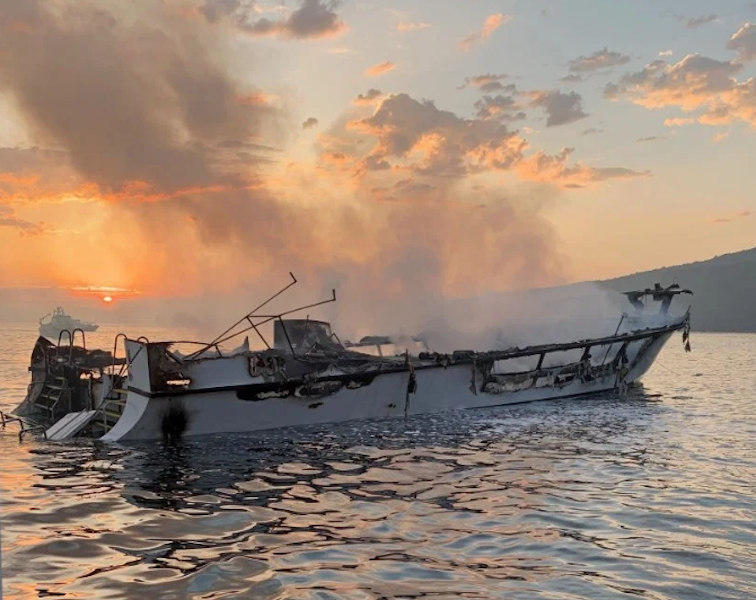The Coast Guard has categorized some small passenger vessels as high risk and they can expect annual reviews more like a Certificate of Inspection (COI) renewal.
Under the previous model, “we were essentially treating a water taxi and a dinner cruise ship in the same harbor equally,” Capt. Matt Edwards, chief of the Coast Guard’s Office of Commercial Vessel Compliance, said this week during a session on the findings from the fatal Conception dive boat fire at the Passenger Vessel Association’s Virtual Convention at MariTrends 2021.
The formula the Coast Guard is using as of Jan. 1 takes into account factors such as the age and type of vessel, compliance history, hull material, number of passengers and crew, and route. And operators can expect the most experienced inspectors to check everything from crew emergency readiness and knowledge to passenger embarkation.
Inspectors should come on board well before passengers and leave before the lines are released. “If you find this is not the case,” Edwards said, operators should talk to the local OCMI (Officer in Charge, Marine Inspection).
The high-risk designation doesn’t assume the vessel isn’t in compliance, he said. The Coast Guard isn’t releasing the criteria that went into the category, but they “have used the formula on other types of vessels, specifically deep draft.”
The criteria will be re-examined annually, Edwards said, and the designations will not be made public.
Some operators with a spotless history were surprised to have a vessel termed high risk and questioned the legal ramifications of such a designation.
Capt. Alan Bernstein, owner of BB Riverboats in Cincinnati and a WorkBoat contributor, suggested labels such as Level 1 and Level 2 instead of high risk.
The risk-based targeting system comes after the last few years in which there’s been “an uptick in the number of marine casualties and loss of life associated with them,” Edwards said, citing the sinking in a hurricane of the 790’ containership El Faro with all 33 on board and fire on the California dive boat Conception that killed 33 passengers and one crew, among others.
The National Transportation Safety Board (NTSB) blamed the dive boat fire on lax oversight by the owner, no roving watch as required by the COI, insufficient smoke detectors and poor escape routes. The roving patrol “is one of your main sources of fire protection,” said Morgan Turrell, acting director of NTSB’s Office of Marine Safety.
The NTSB also faulted the Coast Guard for not requiring safety management systems on all U.S.-flag passenger vessels. The Coast Guard has since issued an Advanced Notice of Proposed Rulemaking to possibly require SMSes on passenger vessels. Turrell acknowledged the positive impact of PVA’s voluntary Flagship SMS, formally recognized by the Coast Guard in 2017.
While 75% of accidents are caused by human error, an SMS is “a proactive way of identifying risk,” Turrell said.
The NTSB also recommended interconnected smoke detectors on overnight vessels and escape paths that lead to different spaces.
Modern detection equipment can network multiple displays and sirens into one system. “When the alarm goes off, we can tell you exactly where the fire is,” said Scott Sullivan, marine sales manager for fire safety product manufacturer Kidde. “I can also have alarms in multiple places. I want the entire crew to know what’s going on.”
Different types of detection systems – for flames, gas, smoke or heat – can be on the same loop, he said. And most systems have self-testing functions with more sophisticated ones testing detectors every 24 hours.
Entry-level systems with several devices and a control panel can cost $1,500 to $2,000, and are relatively easy to install, he said.




